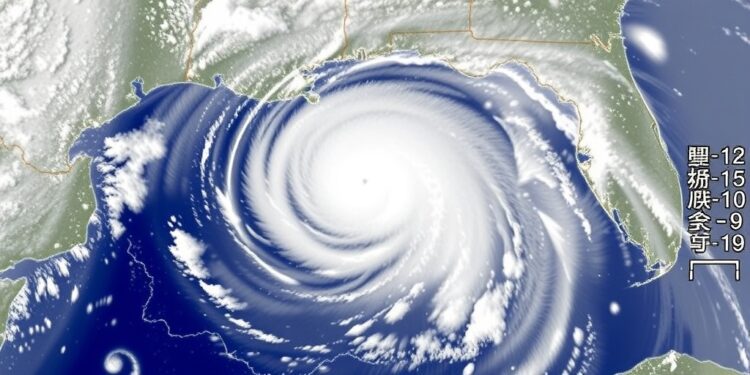A recent study from Tsukuba, Japan, sheds light on the complex atmospheric phenomenon that marks the end of the rainy Baiu season in the Kanto region and northern Japan. This phenomenon is initiated by what meteorologists refer to as a “convection jump,” which is characterized by a sudden surge in convective activity, particularly precipitation. Researchers have identified that this jump is closely associated with enhanced convective activity over the northeastern Philippines in late July. The convection jump highlights significant interactions between local weather patterns and larger-scale atmospheric dynamics, revealing deeper insights into the behavior of regional climates.
The convection jump process is notably influenced by the intrusion of a cyclonic unstable airmass characterized by high potential vorticity (PV). This high-PV airmass emanates from the upper troposphere in mid-latitude regions, where it can significantly modulate convective activity in the subtropical western North Pacific. The researchers emphasize the substantial implications of external upper-tropospheric variations and their effects on this critical seasonal transition in East Asian weather systems. A comprehensive understanding of these dynamics will pave the way for improved seasonal climate prediction models.
To examine the convection jump more closely, the researchers meticulously analyzed data from 20 representative years. This investigation revealed that during periods marked by a convection jump, there is a pronounced meandering of westerly winds over eastern Japan. Moreover, this atmospheric oscillation aligns with the intrusion of large-scale high-PV airmasses into areas where the convection jump occurs. This synergy of weather patterns not only affects precipitation but also serves as a pivotal mechanism that regulates atmospheric dynamics across the region.
Utilizing advanced techniques to detect and track cyclonic circulations, the study outlined how the advection of high-PV airmasses corresponds with the migration of cutoff lows originating from a planetary-scale upper-tropospheric trough. This intricately linked relationship emphasizes how higher-level atmospheric processes can cascade down to influence weather phenomena evident at the surface. The researchers conclude that understanding these interactions is key to grasping the full scope of the convection jump.
The findings of the study indicate that the convection jump is not solely anchored in localized atmospheric conditions but is also significantly modulated by the dynamical influence of high-PV airmass intrusion from mid-latitudes. Additionally, they reaffirm previously documented interactions between the tropical atmosphere and ocean systems, particularly those tied to warm sea surface temperatures. This holistic perspective allows for a more nuanced view of how regional and global atmospheric forces conspire to shape local climatic conditions.
As the study delves into the seasonal evolution from the rainy season into mid-summer, it posits that further exploration of the interactions between tropical and mid-latitude weather systems is vital. By bridging our understanding of meteorological phenomena, researchers can enhance the accuracy of seasonal forecast models, which are critical for agricultural planning, disaster preparedness, and climate resilience.
In recognizing the influence of large-scale atmospheric circulations like Rossby waves, researchers are expanding the conversation on how these phenomena contribute to drastic weather changes. The connections between sustained high-PV airmasses and weather outcomes reveal a larger narrative about climate variability that stretches across hemispheres. Climatically, this represents a crucial aspect of what drives the atmospheric changes that precede the onset of the summer season in the Kanto region.
Those interested in the future of weather prediction and climate studies will find significance in this research as it offers new insights into the interplay between oceanic warmth and atmospheric dynamics. Enhanced understanding of the mechanisms that produce convection jumps will allow researchers and meteorologists to create models that are more reflective of real-world outcomes. It will also foster discussions about adaptive strategies in response to shifting climate patterns.
The implications of these findings extend beyond Japan, resonating with global climatological studies. As researchers continue to monitor and analyze atmospheric behaviors, the quest to understand interconnected climate systems will persist. The interplay between high-PV airmasses, local precipitation patterns, and seasonal changes is a dynamic that warrants further research, particularly as the world grapples with the challenges posed by climate change.
In conclusion, the study provides a critical examination of the factors surrounding convection jumps and posits that the road to enhanced seasonal forecasting lies in fully comprehending the interactions between tropical and mid-latitude climates. As atmospheric science progresses, contributions like these are invaluable for formulating strategies that will combat the effects of climate variability. The findings encourage interdisciplinary collaboration and engagement across the scientific community, pushing the boundaries of our understanding of weather systems.
This research not only deepens our knowledge of atmospheric dynamics but also establishes a foundation for ongoing studies that seek to unravel the complexities of climate systems. As knowledge expands, it becomes increasingly clear that weather phenomena are part of a broader, interconnected fabric of natural processes that merit our careful scrutiny.
Subject of Research: Influence of extratropical upper-tropospheric variations on convection jumps
Article Title: Summertime Convection Jump over the Subtropical Western North Pacific and its Relation to Rossby Wave Breaking near the Asian Jet Exit Region
News Publication Date: 21-Oct-2024
Web References: Journal of Meteorological Society of Japan
References: Not provided
Image Credits: Not provided
Keywords
Climate systems, Seasonal changes, Monsoons, Summer season, Atmospheric dynamics.
Tags: atmospheric dynamics and regional climatesBaiu season rainfall patternsconvection jump phenomenon in Japanconvective activity in subtropical western North Pacificcyclonic instability effects on weather systemsimpact of high potential vorticity airmassinfluence of upper-tropospheric variationsmeteorological research in Tsukuba Japanprecipitation patterns in northern Japanregional climate dynamics in Kanto regionseasonal climate prediction in East Asiatropical and extratropical weather interactions





